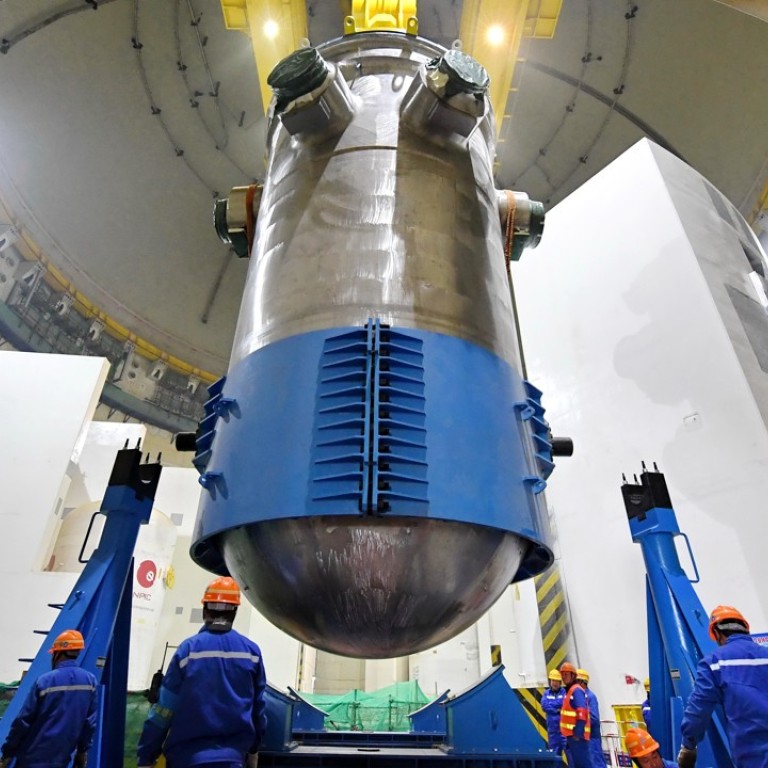
Beijing approves the merger of two state-owned nuclear giants
China’s state asset regulator has been driving consolidation of businesses it supervises to help the economy grow at a slower but more sustainable pace
Beijing has given the green light to the merger between two nuclear giants as it continues to pursue further consolidation of state-owned industrial juggernauts to enhance operating efficiency.
China National Nuclear Corp (CNNC), the mainland’s second-largest nuclear power plant developer, and China Nuclear Engineering & Construction Corp (CNEC), the country’s only nuclear power engineering and construction firm, received the go-ahead to integrate their businesses 10 months after the merger proposal was made public, according to the China State-Owned Assets Supervision and Administration Commission (SASAC).
After the transaction, CNEC will be operating under CNNC, which removes it from SASAC’s direct supervision, the state-asset regulator said in a statement.
The merger will create a new nuclear powerhouse with assets worth more than 620 billion yuan (US$99 billion) and 150,000 employees, according to Reuters’ calculations based on data from the companies’ websites and public statements.
The state-asset watchdog has been seeking to drastically consolidate businesses under its direct oversight to drive efficiency gains amid the transition of the Chinese economy into a new growth pattern where the pace is expected to be slower but more sustainable.
“The consolidation helps CNNC to form a complete industry chain of nuclear power, which encompasses engineering design, construction and research,” China Securities said in a research note.
“CNNC will further diversify its businesses after the consolidation.”
The two companies are known as the central government-run enterprises.
Two A-share units of the two companies announced in separate statements in late March 2017 that their parents were planning strategic restructurings.
CNNC will further diversify its businesses after the consolidation
It is the second major merger deal in China after third-generation technology importer State Nuclear Power Technology and power-plant developer China Power Investment Corp created the mainland’s third-largest developer of nuclear power projects.
The Chinese leadership has been urging state-owned industrial behemoths to reduce overcapacity and excessive stockpiles over the past five years as a way of transforming the economy into a new model driven by consumption rather than debt-fuelled investments.
Heavy industries such as coal, steelmaking and power generations are the key areas that the top policymakers aim to overhaul.
Last year, the state-asset regulator orchestrated a merger between the mainland’s largest coal miner Shenhua Group and China Guodian Corp, one of the country’s top five power producers, to create a 1.8 trillion yuan power utility, the world’s largest.
Analysts said the merger could facilitate the closures of certain unprofitable coal and power plants as the officials with the combined businesses make overall arrangements to tackle the issue of overcapacity.
The number of central government-run businesses under the SASAC topped 170 in 2009. In 2012, the number was slashed to 117 and it now stands at 98.

